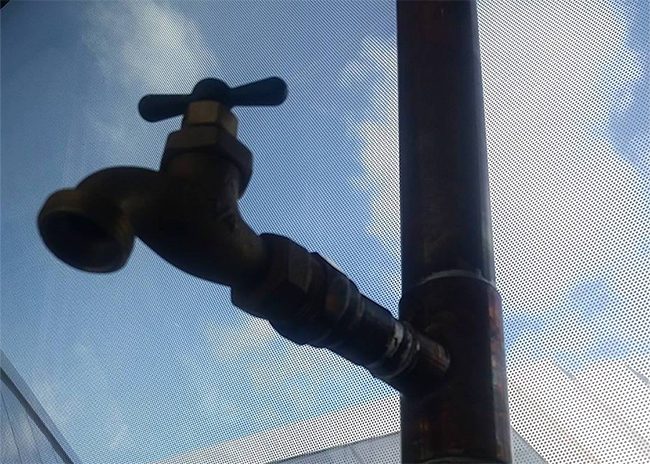Flint Water Echoes
Flint and Lansing students share water crisis experience through copper pipe art installation.

PHC News made it out to Flint, Michigan to attend the Water Infrastructure Conference at the Riverfront Banquet Center March 7-9. The conference provided a status update on the city of Flint’s water efforts, as well as shared lessons learned and new technologies for leaders and residents interested in the topics around aging infrastructure. For more Flint coverage, please turn to pages 24 and 34.
Following the conference, I decided to take a quick detour and press my ears up to a certain set of pipes lining the Alan and Rebecca Ross Education Wing at the iconic Eli and Edythe Broad Art Museum at Michigan State University in Lansing, Michigan. Pipes run along two towering walls of slanted stainless steel slabs and long, luminous bay windows.
The pipe project, “Beyond Streaming: A Sound Mural for Flint,” features Chicago-based artist’s Jan Tichy community-based initiative, as part of the MSU Federal Credit Union Artist Series. Tichy’s exhibit, made entirely of copper pipes, connected high school students from Flint and Lansing to provide a creative dialogue on one of our nation’s most pressing current issues, the Flint Water Crisis.
It’s been three years since the city’s switch to the Flint River water. Flint recently received a $97 million settlement toward funding to replace 18,000 of its lead-tainted pipes by 2020. Though plans are in place, the community still has a long way to go toward the rebuilding of trust after being exposed to high-level of contamination and health problems, and creating public transparency and accountability.
Tichy and others who worked on this project were interested in shifting the public lens to young people who were directly impacted by the crisis. He’s worked with more than 60 high school students from Carman-Ainsworth High School (Flint) and Everett High School (Lansing), leading workshops aimed for students to “explore how different forms of creative expression can be used to communicate ideas and messages, while also touching on themes of social and restorative justice.”
The installation is made of 1,460 feet of copper piping and 530 copper fittings. Each pipe features an audio recording of a student presenting a piece of writing that details their response to the water crisis. Exhibit participants turn spigots to hear each recorded response. There are 30 different stations of recorded lines from letters and stanzas including this one:
Lead poisoning can stunt my growth
And mess with my mind
We would like help if you don't mind.
And this one:
Never shall I ever forget the day
My mom told me
I can't drink from the water faucet.
She told me the water was dirty,
and it wasn't safe.
I looked at her with disbelief.
On a larger scale, this project exemplifies the young people who will inevitably inherit the water infrastructure struggles and work yet to be done in homes and schools across the nation.
The project runs through August 20. Visit www.beyondstreaming.org for artwork and more information on the exhibit.




